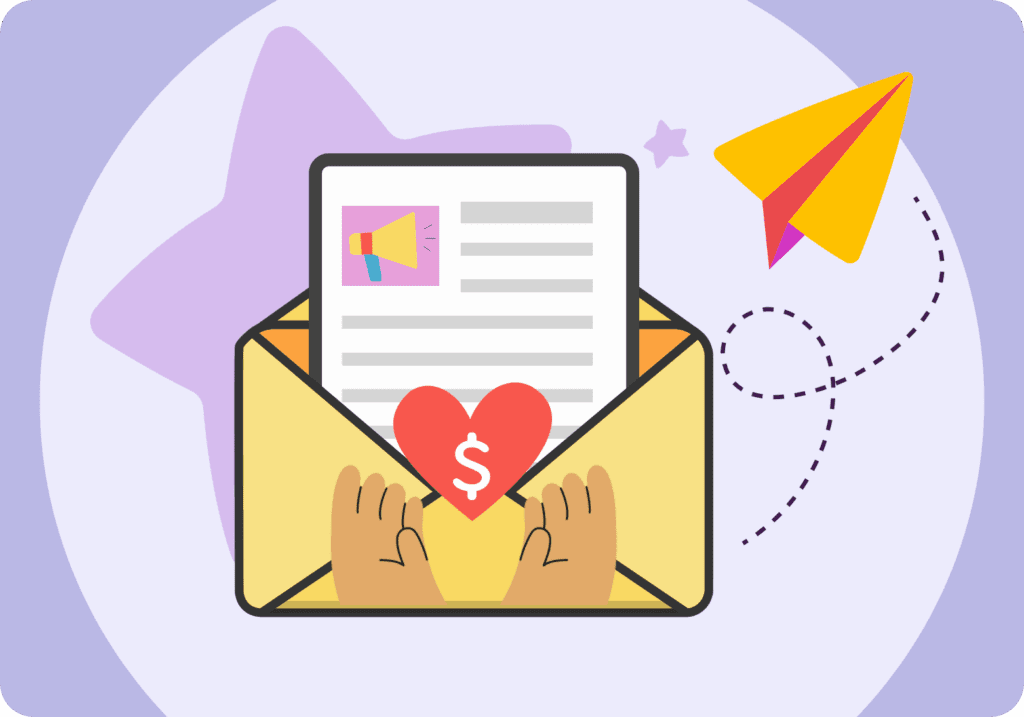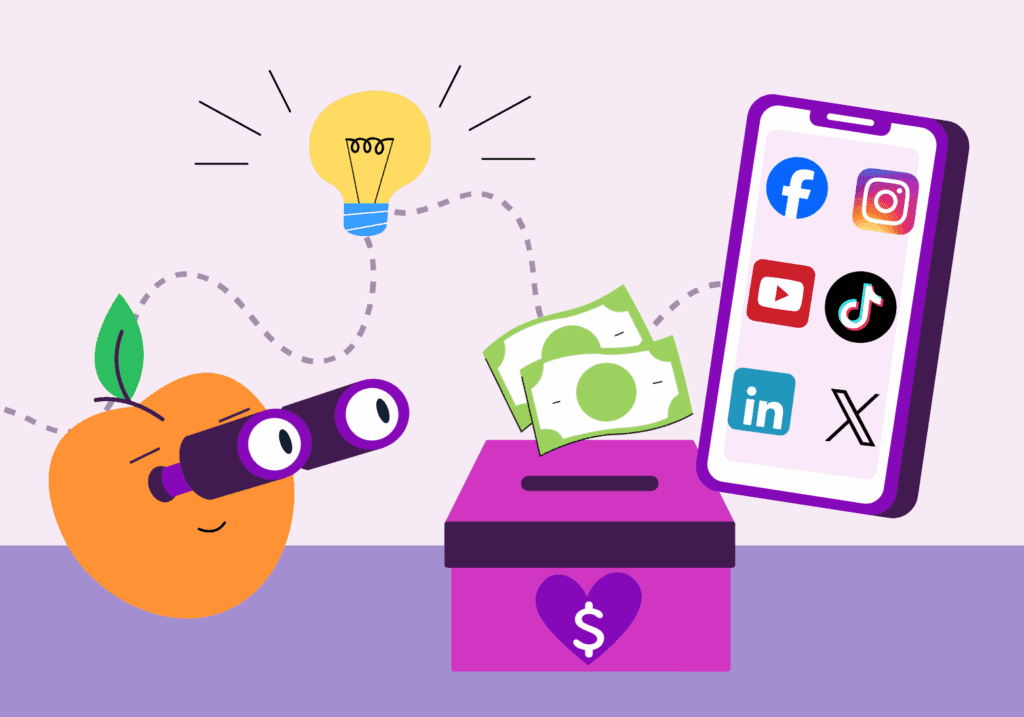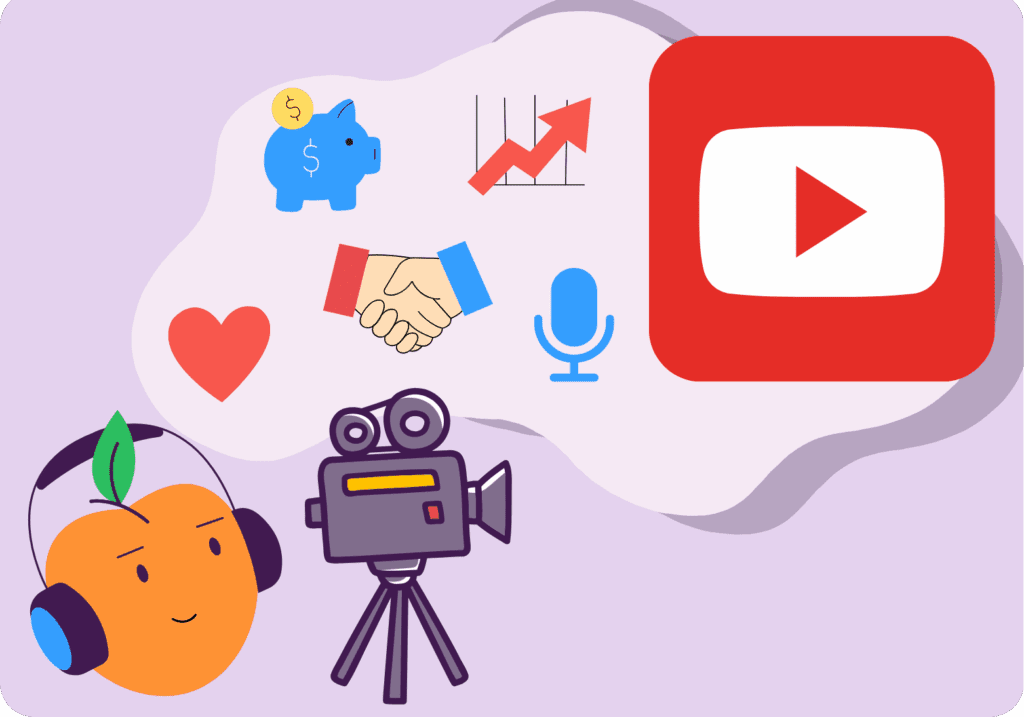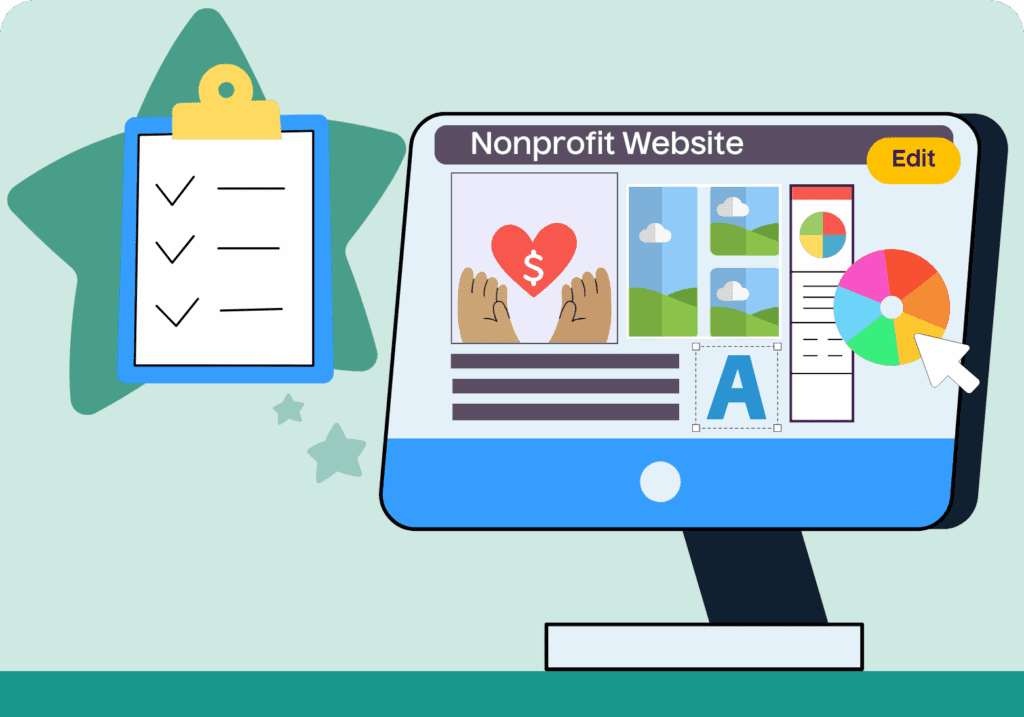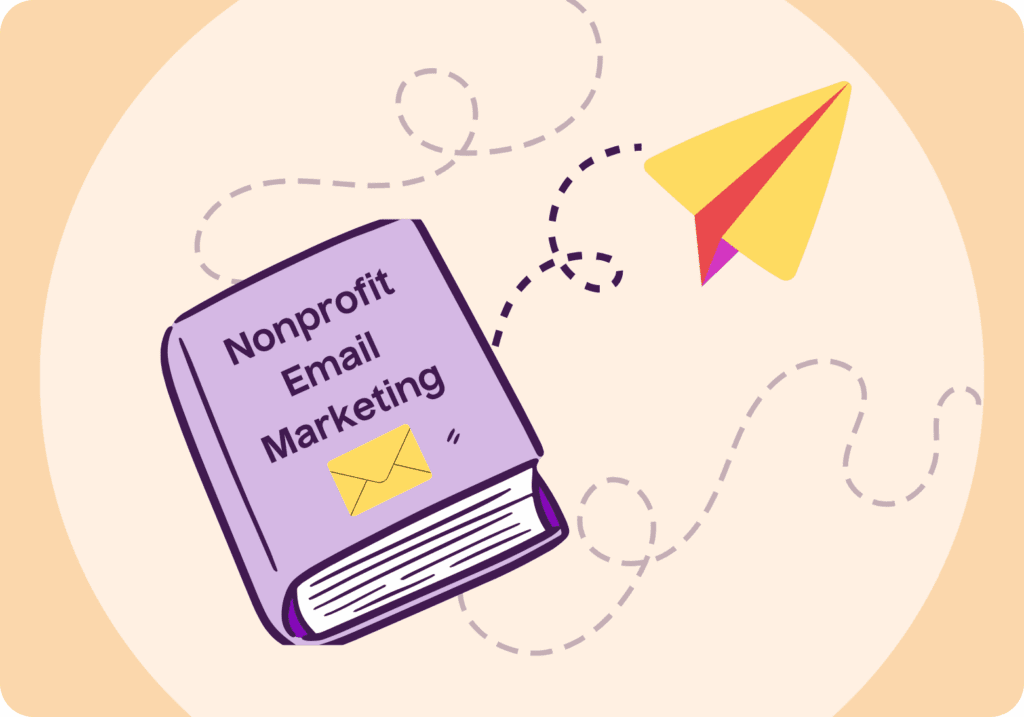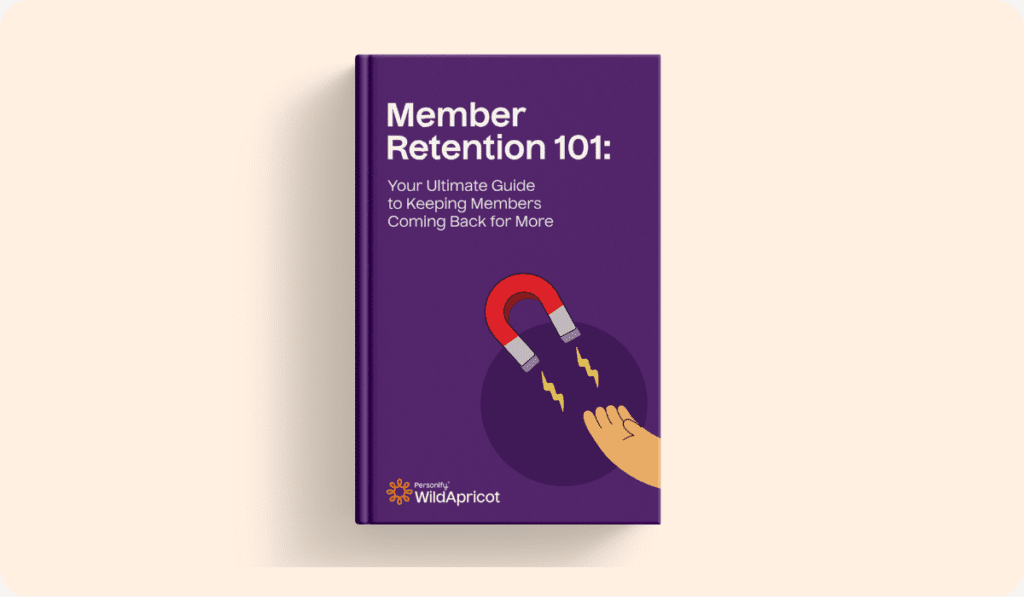Year over year, nonprofits find that email messaging is the most effective way to get the word out. After all, 88% of people check their email every day, and 58% of people check their email first, before their social media.
Your important messages – whether it’s about fundraising, new volunteer opportunities, upcoming events or new member activities – should all be sent via email. But making sure your emails actually get opened and read by your supporters is something many nonprofit organizations struggle with. We know people are checking their emails, but are they reading yours?
If you feel like you’re just throwing emails into the void, it’s likely an issue with your email list. Have no fear, we have all the tips and tricks for ensuring your list is healthy and consistently growing. After all, the more people you can reach, the more awareness you can bring to your mission.
Ready to get started? Read on to level up your email marketing skills.
Why Building a Nonprofit Email List is Crucial
Every nonprofit organization has valuable information to share with its subscribers. However, with the average person receiving 121 emails per day, your messaging needs to resonate with your specific audience. If you fail to do this, then you’re spending valuable time crafting email communications to the wrong people. Resulting in revenue loss and missed opportunities to connect with real supporters.
Your mailing list should be curated from direct supporters of your organization. Whether this includes donors, volunteers, members, or individuals who subscribe to your newsletters but don’t fit into one of those categories. You should never send emails to addresses obtained in any other way, such as buying email lists.
With a personalized email list, your email campaigns will make a bigger impact. Think about it – if you are passionate about animal welfare, you may have subscribed to a local animal shelter’s email newsletter. In their quarterly email, they share about their fundraising goal and how it will help save 50 more animals, so you donate through their call-to-action button. This was a valuable email to you, and you are a valuable subscriber for the nonprofit. A win-win for each party. Whereas someone who doesn’t share the same passion wouldn’t donate, they probably would have sent the email straight to the trash.
Quality, Not Quantity
Many people assume the wider net you cast, the more fish you’ll catch. However, this isn’t always the case. You want your mailing list to work with your mission.. A massive list of random individuals can result in your emails being marked as spam, even if, every once in a while, you gain a new donor.
If marked as spam by too many addresses, your nonprofit organization’s reputation will suffer. Major email providers, such as Gmail and Outlook, will automatically mark all your communications as spam, placing them in folders like “Junk,” “Spam,” or “Other.”
Overall, a nonprofit email list curated of those who care about your cause makes a huge difference in your ROI. It’s better to have a list of 50 passionate subscribers who open and read your messaging than 500 who ignore you.
Finally, some data to back it up: Per The Nonprofit Email Report, the average nonprofit raised about $1.11 per email contact – with smaller nonprofits raising $6.15 as opposed to larger nonprofits (who have larger lists) raising only $0.88 per email contact.
Now that you know the importance of curating your nonprofit email list, let’s dive into our top 5 tips for growing your email list and best practices for nonprofit email marketing.
5 Tips for Growing Your Nonprofit Mailing List
Growing your email list won’t happen overnight; it’s important to go slow and steady – be the tortoise.
One of the best ways to achieve this is to focus on building relationships with supporters online and capitalizing on the momentum from events or fundraising campaigns.
1. Create Compelling Lead Magnets
Lead magnets, also known as “freebies,” are the things you offer people in exchange for their email address. I’m sure you’ve experienced these lead magnets in real life – I know that in college, I signed up for many newsletters for a free slice of pizza in the quad.
Some of the most common freebies you’ll see in the nonprofit industry are access to educational assets. Whether it’s a robust piece of content, such as an e-course, or a simple checklist, you can gate your virtual resources in exchange for email addresses. It’s essential to include a privacy policy statement when collecting email addresses and a clear opt-in/opt-out for marketing content.
In your lead magnet form, simply create a form with a newsletter opt-in checkbox like seen here:

Or include an automatic consent statement upon completion of your lead magnet form, seen here:

Types of Digital Lead Magnets
Here’s a list of online lead magnets to consider. Try testing a couple of different options for your supporters – you never know what will resonate with people!
1. A Case Study: Case studies can be inspirational giveaways for your audience, and they can position your organization in a great light, too.
2. A Toolkit: Put together a collection of useful resources that your subscribers would find interesting (like cheat sheets, blog posts, checklists, videos or ebooks).
3. A White Paper: One of the most popular ways nonprofits showcase their value to prospective members who visit their website.
4. An Online Course/Webinar: Currently offer educational sessions or webinars to members? Offer the recording as one of your lead magnets – easy to do if you’re already producing the content!
5. Access to a Live Q&A with You: Some nonprofits offer a monthly Q&A where audience members can ask questions that are on their minds. This type of open Q&A can be a great way to establish your authority and connect with your subscribers.
You can offer the live session to your new subscribers, and also send them recordings of previous Q&A sessions right after they sign up for your list.
6. A Cheat Sheet: Everyone wants to do things quickly! Is there a shortcut or “cheat” that your audience would find beneficial?
7. A Checklist: People love checklists. Offering a digital download that people can print out on their own is a great way to give options to those who prefer physical resources.
Pick an idea from your brainstormed list, create the “freebie,” and advertise it on your social media or website with an opt-in landing page or email subscription form. Track the results and see how your audience responds. When you find the right incentive for your audience, you’ll notice a spike in the number of subscribers you receive.
2. Leverage Your Social Media
It seems like everyone is on their phones, scrolling through their various social media platforms. Whether it’s LinkedIn, Facebook, Instagram, X or TikTok – millions of individuals consume content from all types of creators, organizations and businesses. And thanks to the abundance of the platforms’ algorithms, your nonprofit can be seen in someone’s newsfeed even if they’ve never heard of your organization before.
But the question is – how do you gain the favor of the all-powerful algorithm, and once you’re on someone’s radar, how can you get them to subscribe?
Valuable freebies, of course.
Share Valuable Content
As we mentioned before, there’s a ton of digital resources you can create and share with your audience to gain email subscribers. This content should align with your nonprofit organization’s industry and mission. For example, a nonprofit focused on childhood nutrition can offer an on-demand webinar of “Cooking Seasonally: How to Prepare a Fresh, Fully Balanced Meal in Every Season.”
Be sure to post on your social media channels whenever you have a new asset and include a link with a CTA for your email newsletter. Verbiage like “Be the first to know when we share new content – subscribe to our email list!”
 Sunny Tip: Keep the balance but maintain consistency
Sunny Tip: Keep the balance but maintain consistency
It’s essential to have balance when it comes to your social media. No one wants to feel like they’re asked to input their email every time you share content through your social accounts. While you’re not necessarily selling anything to your followers, it can negatively impact your reputation if it seems like you only offer gated resources.
Posting consistently will also ensure that you pop up frequently in newsfeeds. Share your lead magnets, but also things like milestones of your org, behind-the-scenes photos and repost industry content to be active in your community.
3. Utilize Events for List Growth
Events are one of the easiest ways to add your offline supporters to your mailing lists. There are a couple of different ways you can drive subscriptions through fundraisers, volunteering opportunities, conferences, networking events and even your meetings! Not only will you get direct confirmation that these individuals want to be on your email list, but it’s likely they will be highly engaged and interact with your CTAs (calls-to-action).
Consider these methods for mailing list growth at events:
- Check box for subscribing to your nonprofit’s content upon filling out registration forms
- QR codes that link to your subscription page during educational sessions or webinars
- Email submission and subscription opt-in in exchange for raffle tickets or giveaways at your check-in table
- Include a newsletter opt-in in your event’s follow-up communications
- Bring contact forms to conferences for new connections to subscribe to your email communications
4. Optimize Your Landing Pages
Your website is one of the first impressions many people will have of your nonprofit organization. Chances are, if someone is perusing your website, they’re interested in your mission – utilize this opportunity to capture their contact info with a sign-up form.
Be strategic, though.
It’s fine to have a pop-up email subscription form on your home page or resources page, but website visitors shouldn’t be bombarded by an email form on every webpage. Remember, you want to reduce barriers to action, and annoying pop-ups can prevent new subscribers.
If you want to keep it super simple, include a “subscribe to our newsletter” CTA that rests in your website’s header. That way, it’s visible if website visitors are interested, but not as overpowering as a pop-up form.
Building an Effective Subscription Page
In addition to just a simple subscription form, you’ll want to create a designated landing page for joining your email list. This is the page where you’ll include:
- A great image or graphic that represents your organization’s email content
- A description of the types of content subscribers will receive in your nonprofit email newsletters
- The frequency of your email marketing – let people know if they can expect weekly, monthly or quarterly communications
- If you offer multiple newsletters, consider a checkbox for which emails subscribers want to opt-in to
- Bullet points rather than long paragraphs
This page should be focused on one thing, and one thing only: getting people to subscribe to your email list. Don’t overwhelm visitors with multiple CTAs to follow your social media, request donations, register for an event or sign up to be a volunteer.
5. Encourage Current Supporters
The biggest advocates of your organization will be your active supporters and subscribers. They’re the highest converters and are usually happy to share your nonprofit’s goings-on with others.
Simply ask them to use their network to expand your organization’s reach. You should tastefully ask your staff, board, volunteers, donors and others to post the link to your mailing list landing page anywhere and everywhere. They can put it in electronic signatures, online profiles, vacation responder emails and much more.
You can also build a simple email campaign that launches once or twice a year, asking existing supporters to share. Center the campaign around a milestone or major achievement of your nonprofit. This social proof could be: “Thanks to our 1,500 email subscribers who helped us raise $20K to build homes for those in need!” and include a CTA: “Stay in the loop to join us on our next community initiative.”
Nonprofit Email Marketing Best Practice: Email Hygiene
Now that you’ve collected addresses for your email list, there’s one more step you shouldn’t skip: making sure you keep your email list clean and healthy.
Otherwise, you might see an increase in hard bounces, which happens when an email returns to the sender because the recipient doesn’t exist. This hurts your sender reputation and can eventually lead to your account getting blacklisted. Besides, you might deal with low open rates, which also needs fixing to keep your list healthy.
Here’s what you can do:
1. Use an email verification service. This is the fastest way to check if an email is valid. Services like Snov.io or Hunter are easy to use but may differ depending on the features offered.
Some of them offer a freemium plan, which allows you to test the tools’ capabilities and verify a specific number of emails. For example, the services mentioned above offer up to 50-100 verifications per month. This should be enough if you’re just starting out with your email list.
2. Make it easy to opt-out. If you don’t include an unsubscribe link, your letters can be sent to a Spam folder, and ISPs may block or filter them. You can place it at the end of the email.
3. Remove inactive subscribers. Review your mailing list every six months to ensure accuracy and relevance. After all, why keep sending emails to people who are clearly not interested in your content? Some email services may automatically do this, like HubSpot. They have a check box “don’t send to unengaged contacts”, which makes it easy!
Track recipients who have not opened or clicked an email in a long time. You may try to re-engage them and regain their interest. But if this doesn’t work — don’t be afraid to say “bye”!
Growing and maintaining an effective nonprofit email list isn’t just about collecting as many email addresses as you can — it’s about building relationships with the community that supports your mission. From offering valuable lead magnets to optimizing your website and leveraging social media, your email marketing strategy should prioritize quality over quantity.
Remember, having a curated list of subscribers is one of your most powerful tools for making a difference. A healthy email list allows you to interact with those connected to your cause, increase donations, boost event attendance and share stories that inspire action.
Start small and be consistent, test what resonates with your audience and prioritize building genuine relationships.

